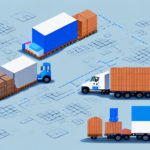Maximizing Loading and Unloading Efficiency in Supply Chain Management
Understanding the Importance of Loading and Unloading
Loading and unloading operations are pivotal in the supply chain, serving as the bridge between various stages of product movement. Efficient handling ensures that goods transition smoothly from transportation modes to warehouses and vice versa, minimizing downtime and reducing operational costs. According to a McKinsey report, optimizing these processes can lead to a cost reduction of up to 20% in logistics operations.
Ensuring Safety and Product Integrity
Proper loading and unloading practices are essential not only for operational efficiency but also for the safety of employees and the integrity of products. Secure loading prevents product damage and reduces the risk of accidents during transportation. Implementing standardized procedures and safety protocols can significantly decrease workplace injuries and product losses, as highlighted by the Occupational Safety and Health Administration (OSHA).
Common Challenges in Loading and Unloading Operations
Logistics Planning and Coordination
Effective logistics planning and coordination are fundamental to successful loading and unloading operations. Challenges such as scheduling conflicts, communication breakdowns between transportation providers, warehouse staff, and suppliers can lead to delays and increased costs. Utilizing integrated supply chain management systems can enhance coordination and streamline operations.
Handling Hazardous Materials
Managing hazardous materials adds another layer of complexity to loading and unloading processes. These materials require specialized handling, strict adherence to safety regulations, and accurate documentation to prevent accidents and environmental hazards. Training employees on hazardous material protocols is crucial for maintaining compliance and safety.
Strategies and Best Practices to Enhance Efficiency
Implementing Automated Technologies
Integrating automated technologies such as conveyor systems, automated guided vehicles (AGVs), and robotics can significantly improve the speed and accuracy of loading and unloading operations. Automation reduces manual labor, minimizes human error, and increases throughput.
Optimizing Warehouse Layout
A well-designed warehouse layout can enhance operational efficiency by reducing the distance employees need to travel and streamlining the movement of goods. Strategic placement of products and equipment ensures quick access and minimizes handling time.
Prioritizing Shipments
Establishing a system to prioritize shipments based on urgency and importance can help in managing workloads effectively. This ensures that critical shipments are processed first, reducing the risk of delays and improving overall service levels.
The Role of Technology in Streamlining Operations
Real-Time Monitoring and IoT Integration
Utilizing Internet of Things (IoT) sensors and real-time monitoring systems allows for continuous tracking of loading and unloading activities. These technologies provide valuable data that can be used to identify bottlenecks, predict maintenance needs, and optimize resource allocation.
Advanced Tracking Systems
Technologies such as Radio Frequency Identification (RFID) and Global Positioning System (GPS) enhance inventory visibility and shipment tracking. These systems enable precise location tracking, reducing the chances of lost or misrouted shipments.
Training and Safety Measures for Personnel
Comprehensive Training Programs
Investing in thorough training programs ensures that employees are well-versed in the latest loading and unloading techniques, safety protocols, and the operation of specialized equipment. Regular training sessions can enhance skill levels and promote a culture of safety.
Personal Protective Equipment (PPE) and Safety Protocols
Providing appropriate personal protective equipment (PPE) and enforcing safety protocols are essential for protecting employees from potential hazards. Regular safety audits and drills can help in maintaining high safety standards and ensuring compliance with industry regulations.
Measuring Success: Key Performance Indicators (KPIs)
Loading and Unloading Time
Tracking the total time taken for loading and unloading operations helps in identifying inefficiencies and areas for improvement. Reducing these times can lead to faster turnaround and increased capacity.
Shipment Handling Efficiency
Monitoring the number of shipments handled per hour provides insight into operational productivity. Higher handling rates indicate a more efficient process, while lower rates may highlight the need for process optimization.
On-Time Shipment Percentage
The percentage of shipments delivered on time is a critical KPI that reflects the reliability and efficiency of the supply chain. High on-time delivery rates enhance customer satisfaction and trust.
Case Studies: Success Stories in Efficient Operations
Amazon's Automated Fulfillment Centers
Amazon has revolutionized its loading and unloading processes by implementing advanced automated conveyor systems and robotic sorting technologies. This automation has significantly reduced processing times and increased accuracy in their fulfillment centers.
Walmart's Real-Time Data Analysis
Walmart utilizes real-time data analytics to monitor and optimize loading operations across its logistics facilities. This approach has led to improved coordination, reduced delays, and enhanced overall efficiency.
IKEA's Sustainable Loading Practices
IKEA has adopted reverse logistics systems that not only streamline loading and unloading but also promote sustainability by facilitating the recycling and reuse of packaging materials. This initiative has reduced their carbon footprint and operational costs.
Future Trends in Loading and Unloading Operations
Integration of Robotics and AI
The future of loading and unloading operations lies in the integration of robotics and artificial intelligence (AI). These technologies promise greater automation, predictive maintenance, and smarter decision-making processes, leading to unprecedented levels of efficiency.
Adoption of Augmented Reality (AR)
Augmented Reality (AR) is emerging as a tool to enhance loading and unloading operations by providing real-time information overlays. AR can assist employees in identifying optimal loading patterns, navigating warehouse layouts, and ensuring accuracy in shipment handling.
Drone Technology for Cargo Transport
Drone technology is set to transform the logistics landscape by enabling rapid and remote loading and unloading of goods. Drones can facilitate quick transportation of smaller packages, reducing reliance on traditional manual methods and speeding up delivery times.
Enhanced Collaboration Platforms
Future trends emphasize the importance of seamless collaboration between all stakeholders in the supply chain. Advanced collaboration platforms will enable better communication, data sharing, and coordinated efforts, leading to more synchronized and efficient operations.
In summary, optimizing loading and unloading operations is essential for enhancing the efficiency and reliability of the supply chain. By adopting advanced technologies, implementing best practices, and prioritizing safety and training, businesses can achieve significant improvements in their logistics processes, ultimately driving success and competitiveness in the market.




















